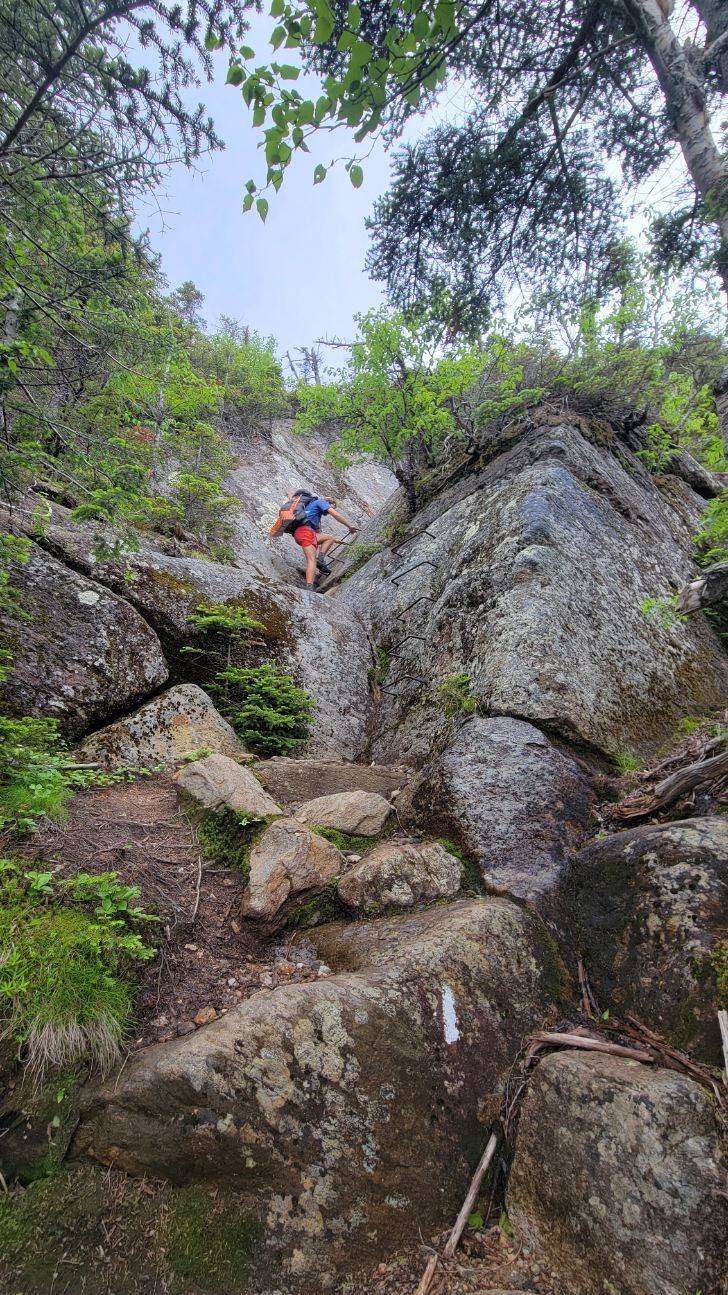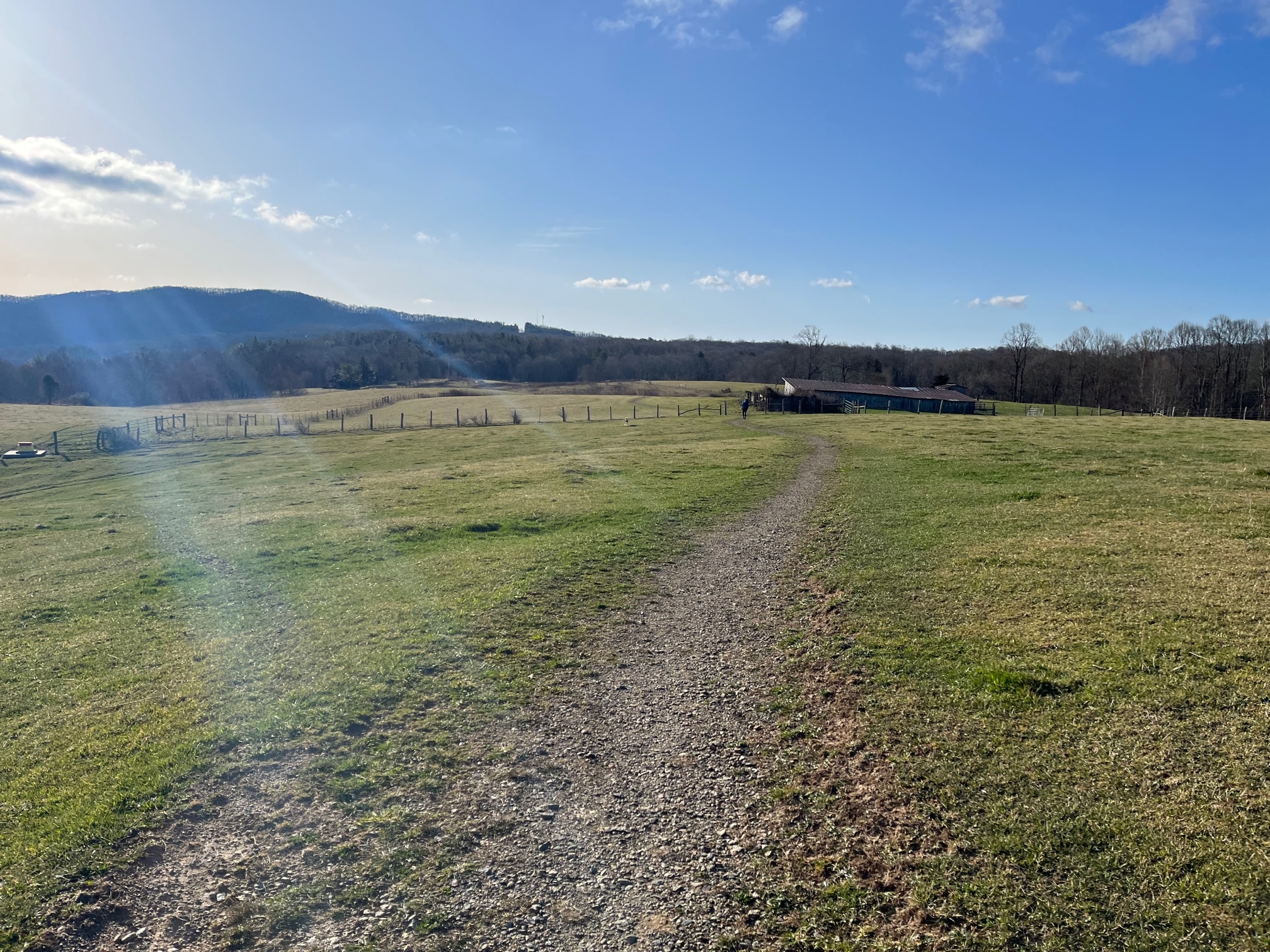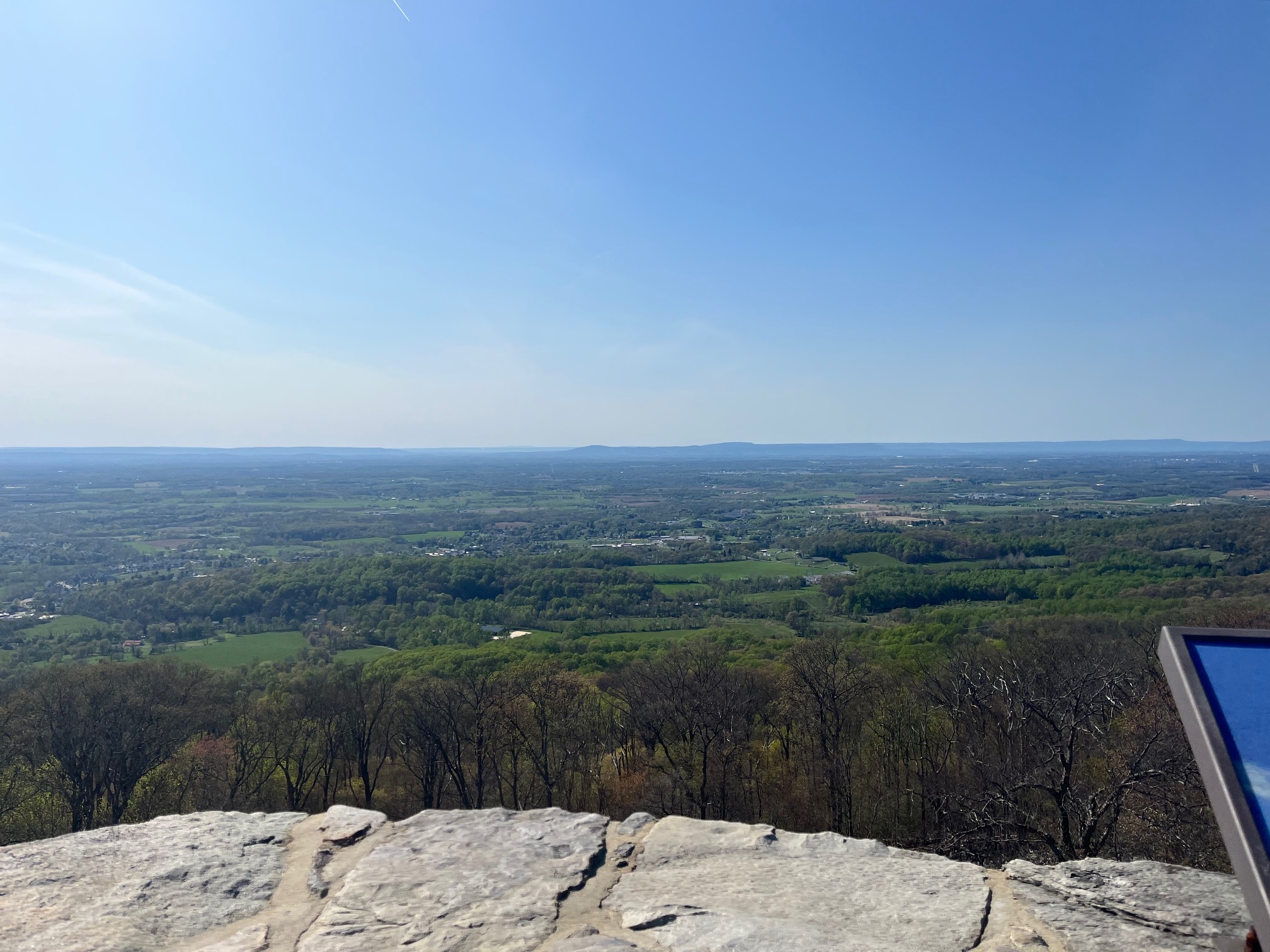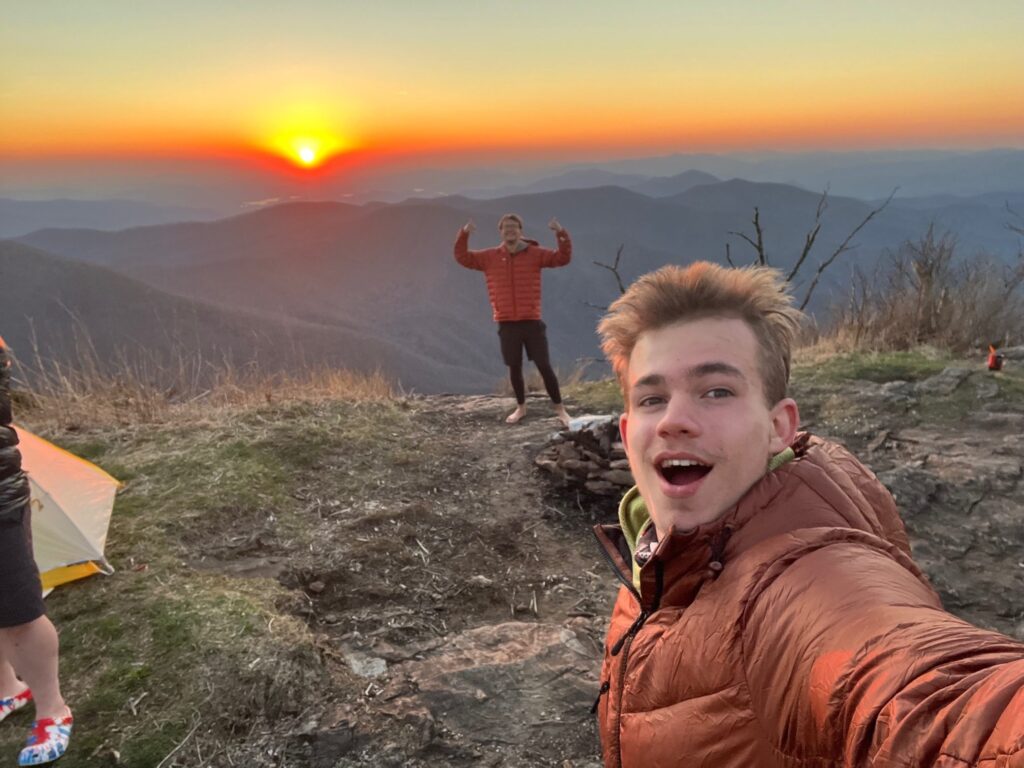
15 Surprising Sections of the AT No One Talks About – The Trek
You’ve heard of the dreaded Rocksylvania and the harrowing beauty of the Whites. The Smokies are widely known for their beautiful ecology and Shenandoah for its rolling hills and plentiful waysides. When attempting an Appalachian Trail thru-hike, prospective hikers prepare themselves to face these sections, but when dreams turn into reality, lesser-known sections are often more memorable.
Hikers expect to be challenged by the Smokies, but few give much thought to the steep, rocky climbs of the Nantahala region. Everyone looks forward to the Whites, but most are caught unaware by the scenery and relative ease of southern New Hampshire. This article will prepare you for the sections of the AT that people don’t tell you about: the ones that manage to fly under the radar despite surprising challenges and unexpected beauty.
1. North Carolina/Georgia Border
After northbound thru-hikers reach a significant milestone with their first state line, they are quickly faced with a steep climb out of Bly Gap up to Sharp Top and Courthouse Bald. The trail climbs at a rate of 1,000 feet per mile, testing NOBOs’ undeveloped trail legs. Shortly after, however, hikers are rewarded with tremendous views from Standing Indian Mountain, the AT’s southernmost 5,000-foot summit.
READ NEXT – The Top 5 Fearmongered Sections of the Appalachian Trail (And Why You Shouldn’t Worry About Them)
2. Mt. Albert, North Carolina
Mt. Albert treats hikers with tremendous views from a tall fire tower that marks NOBOs’ hundredth mile from the southern terminus. However, to reach the summit, a steep, rocky climb is required featuring lots of hand-over-hand rock scrambling. The south side of the peak has the most intense rock scrambles south of the Mason-Dixon line and is exhausting for NOBOs and knee-shattering for SOBOs. That being said, this section is brief, and hikers are rewarded with beautiful views and a significant milestone.
READ NEXT – The Appalachian Trail State-by-State Overview: Highlights, Maps, Tips, and More
3. Resupply Desert, North Carolina
The section of North Carolina between the towns of Franklin and Hot Springs offers few high-quality resupply options. Franklin, a large trail town, features several big box supermarkets. However, the next 160 miles are dotted only with small convenience stores and hostel resupplies. The options are as follows:
Franklin (mile 109.4): Numerous options, including Ingles and Walmart
Nantahala Outdoor Center (mile 136.7): Small resupply options offering trail food, dehydrated meals, snacks, and a restaurant
Fontana Marina (mile 164.4): Slightly larger resupply option than the NOC with a decent selection in some items, lacking in others.
Gatlinburg (mile 207.7): See above. Food City, a large grocery store, is located three miles from the town center and is accessible by a free trolley, although it is 18 miles from trail.
Standing Bear Farm (mile 241.5): Famous hostel with a very small resupply notorious for carrying an odd selection of expired food.
Hot Springs (mile 274.9): The southernmost town directly on the AT features a well-stocked Dollar General.
4. The City of Gatlinburg
OK, this isn’t a section of trail. But it is a common resupply point because of its location halfway through the Smokies and in the middle of a long section without good resupply options.
The first challenge that the city offers is just getting there. Hitchhiking is usually difficult as the road is filled with tourists who rarely pick up hitchhikers, and shuttles are expensive as the town is 30 minutes from trail. Furthermore, the National Park Service closes the road at the first sign of snow, ice, or even just high winds, which is announced on Twitter using the handle @SmokiesRoadsNPS.
Once you make it there, Gatlinburg can best be described as a combination of Six Flags, Las Vegas, and a rural state fair. It can be a lot of fun but also quite a culture shock to someone used to living in the woods. It’s a major hub for tourists, with tons of gimmicky tourist traps, streets filled with people packed shoulder-to-shoulder, and expensive food and accommodation.
You can still have a good time here if you prepare in advance and take advantage of tourist attractions, but be aware that Gatlinburg isn’t just any trail town.
5. Southern and Central Virginia
“Virginia is Flat” may be one of the most commonly perpetuated myths of the Appalachian Trail. Throughout my own northbound experience in Georgia and North Carolina, I was often told that it would get easier once I got to Virginia. This was wrong. While there are certainly many scenic sections in this state, it is filled with long, steep climbs and descents like Three Ridges and the Priest. It’s certainly not the most challenging section of the trail, but it is not easy.
READ NEXT – The Appalachian Trail Thru-Hiker Gear List
6. New York
At first glance, the Empire State seems unassuming. Known for its delis, many thru-hikers look forward to this state as one can carry little food and enjoy fresh sandwiches or pizza just about daily. Prospect Rock, this section’s highest point, lies at just 1,433 feet above sea level.
Why, then, was New York the second most disliked section of the entire trail according to The Trek’s 2022 Appalachian Trail Thru-Hiker Survey? Surprisingly, New York’s terrain is the most rugged in the Mid-Atlantic, featuring many short but steep sections that are bound to slow your pace. Northbounders will experience more rock scrambles than they have on the entire trail before this point and get a toned-down preview of what the trail will be like in the Whites.
That being said, the trail winds by several ponds and swimming holes, and the convenient access to towns can make the trail here very enjoyable. Take advantage of these features, and you will likely still enjoy this state.
7. Mosquito Alley, Massachusetts
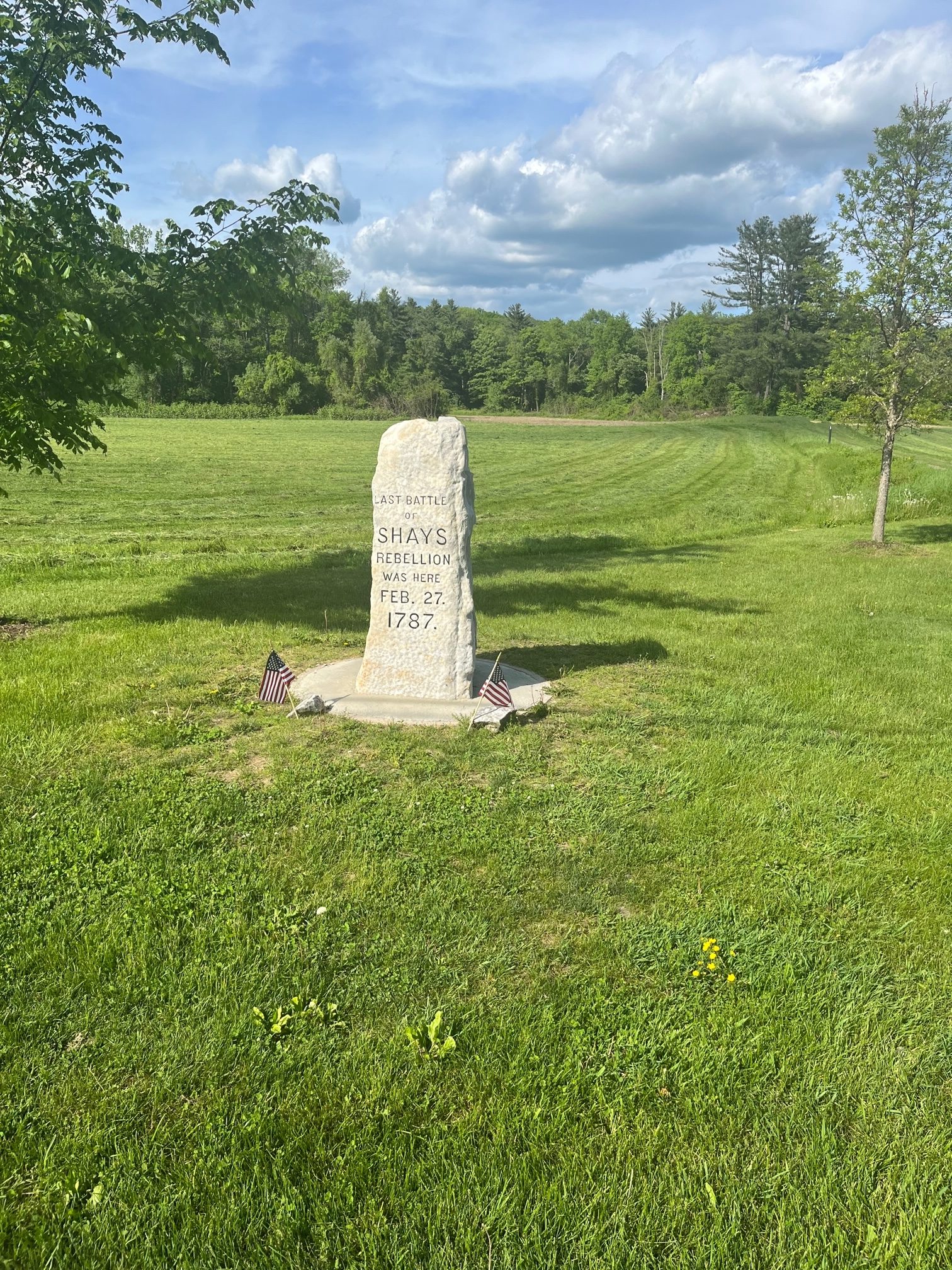
I was too busy being eaten alive to take any pictures during this section, so here’s a picture of a monument commemorating the nearby Shays’ Rebellion.
My most striking memory of hiking through my home state of Massachusetts was not a beautiful summit like Mt. Greylock or the interesting microclimate of Sage’s Ravine. Instead, it was a 2.7-mile swamp-like section located just south of Great Barrington where I experienced the worst mosquitoes of not just the AT but my entire life. They were so bad that if you opened your mouth, you could probably get a full resupply’s worth of calories just from the bugs.
Those wishing to hike this section between Jug End Road and Sheffield-Egremont Road should prepare in advance. Apply bug spray, put on a head net, eat a snack, drink some water, and put on long sleeves before entering this section because you will not be able to stop in the midst of it. On the bright side, this may be the fastest that you hike for the entire trail as you’re running away from the bugs.
READ NEXT –
8. The Mahoosucs
New Hampshire and Maine are just about undisputedly the hardest states on the trail, and straddling the state line is a 30-mile jaunt through the Mahoosuc Range, arguably the hardest single section of the entire trail. Just north of the Maine border lies Mahoosuc Notch, which is usually agreed upon as the most challenging mile on trail. The trail climbs over boulders and descends through caves for a mile that often takes hikers hours.
The Notch is notorious, but the rest of the range is just as formidable. Steep climbs, intense rock scrambles, and knee-destroying descents will tire even the strongest hikers. To top it all off, the trail in this section is not maintained very thoroughly: you’ll find few bog bridges and a lot of overgrown vegetation and mud. The secret to trekking through the Mahoosucs is to admire the scenery, appreciate the challenge, and expect a decrease in mileage, even compared to the rest of the Whites.
For NOBOs exhausted with the Whites, know that the challenge does not stop after passing Gorham. For SOBOs, congratulations: it only gets easier from here.
9. Northern Goshawk Territory, Maine
Wildlife tends to be a common concern among prospective thru-hikers and even more of a concern to their friends and family. While most people are worried about bears or snakes, your chances of a negative interaction with these creatures are very low. The Northern Goshawk, a large bird of prey often found in Maine, may be a more realistic concern for some thru-hikers.
The Northern Goshawk is notable for being extremely territorial during breeding season. It defends itself by loudly chirping, swooping just above your head, and in some cases, attacking your face. In some years, these birds cause few problems, but in other years, they can cause significant disruption.
In 2022, one feisty bird built a nest directly next to the trail adjacent to Pierce Pond and became notorious among thru-hikers. On the day I hiked through this section, I met over 10 people who were swooped at (including myself) and a few who were physically pecked. I met a few others who had their hats stolen.
The good news is that this season typically begins in March or April and ends in June or July, so by the time most NOBOs arrive, the bird is no longer nesting and is far more tranquil. If you are an early NOBO or SOBO, pay attention to the abundant warnings to be aware, and in the case of an encounter, wave your trekking poles or a stick above your head.
While some sections can be difficult and challenging, often to the surprise of thru-hikers, other sections offer a welcome relief. These sections are not talked about often but often pleasantly surprise hikers with their ease or beauty.
10. The Tennessee Turnpike
Northbound hikers struggling with the south’s challenging terrain will be relieved by the last fifty-ish miles of Tennessee, leading up to the Virginia state line and the famous town of Damascus, known as Trail Town U.S.A. This section features rolling hills and long, easy ridge walks that provide a stark contrast with sections like the Smokies and Roan Highlands. In fact, many hikers choose to partake in the Damascus Marathon, hiking exactly 26.2 miles from Iron Mountain Shelter to the town.
READ NEXT – The Appalachian Trail Thru-Hiker Checklist: Do These 27 Things Before Hitting the Trail
11. Maryland
Maryland is one of the most commonly forgotten states on the AT. At 40 miles long, it’s the second-shortest state on trail, so hikers usually don’t spend much time here. In fact, many thru-hikers attempt the Four State Challenge, hiking from Virginia to Pennsylvania or vice versa in one day, completing the entire West Virginia and Maryland sections in one go.
While it often gets blown through without much attention, the state actually has a considerable amount of scenery. Beautiful views like Weverton Cliffs and Annapolis Rock are complemented by historical sites like the original Washington Monument and the Civil War battlefield at South Mountain. Hikers that opt out of the Four State Challenge will also enjoy some of the nicest and best-maintained shelters on the entire trail.
12. Cumberland Valley, Pennsylvania
Pennsylvania’s Cumberland Valley may be the easiest section of the entire trail. Despite the fact that Pennsylvania is known for its treacherous rocky terrain, southern PA, and this valley in particular, are exceptions. This 14-mile stretch winds through farmland and suburbia just outside of Harrisburg and features an average elevation change of about 120 feet per mile. While this section’s terrain is very easy, it is worth noting that there are few water sources, so hikers should plan ahead.
13. Northern Connecticut and Southern Massachusetts
On my own thru-hike of the Appalachian Trail, I found the stretch between Bear Mountain, CT, and Mt. Everett, MA to be one of the most pleasantly surprising. Bear Mountain, Connecticut’s highest peak, offers great views. Just north of the summit, the trail descends steeply into Sage’s Ravine, which features a beautiful old growth hemlock forest and a number of waterfalls.
North of the ravine, the AT gradually climbs Mt. Race and traverses open ledges for .6 miles, offering some of the most stunning views in the region. In my opinion as a NOBO, these were the best views since Virginia. Mt. Everett, north of Mt. Race, provides great views as well. Beware, though, immediately following this section is the aforementioned Mosquito Alley.
14. Southern Vermont

Little Rock Pond, one of Vermont’s many swimming holes.
The approximately 100 miles between the Massachusetts border and the city of Rutland offer beautiful views and gorgeous swimming holes. These ponds are usually warmer than your average mountain pond, and most of them have tremendous campsites and/or shelters nearby.
Note that the Green Mountain Club charges $5 to use some of these sites to fund their caretaker program, allowing for trail maintenance, education, and construction projects. The section is known for being muddy (it’s nicknamed “Vermud,” after all), but with the exception of a handful of long climbs like Stratton or Bromley Mountains, the terrain is relatively easy.
15. Dartmouth Region, New Hampshire
Ask any thru-hiker about their experience in New Hampshire, and they’ll be sure to tell you about the challenging climbs, intimidating weather, and knee-destroying descents of the White Mountains. However, the 45 miles between the Vermont border and the base of Mount Moosilauke are significantly easier than the Whites, although more difficult than the Mid-Atlantic and Southern New England.
Smarts Mountain is home to an enclosed cabin and tall fire tower, while Mount Cube and Holt’s Ledge offer outstanding views and scenic cliffs. NOBOs should cherish this section, as this is the last relatively easy stretch until the 100 Mile Wilderness. Meanwhile, SOBOs will surely celebrate reaching this milepost after completing the challenging White Mountains.
There’s no objective standard for what makes a section of trail challenging or beautiful. Not everyone will have the same experience, and that’s to be expected. For example, those climbing Mt. Albert with a rested body and full stomach may enjoy the challenge while others struggle. Southern Vermont can be very pretty, but hike through in a rainy year and you might be too focused on the mud to enjoy the scenic ponds.
The Appalachian Trail’s famous sections are famous for a reason, whether it’s because they’re beautiful, challenging, or dangerous. But the trail’s hidden gems are often just as unique and notable—just without the crowds and notoriety that more popular sections attract.
Featured image: Photo via Brian Garner. Graphic design by Zack Goldmann.






